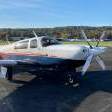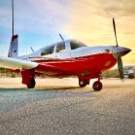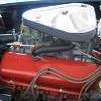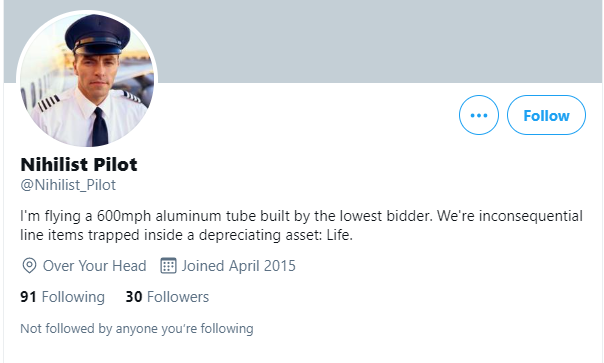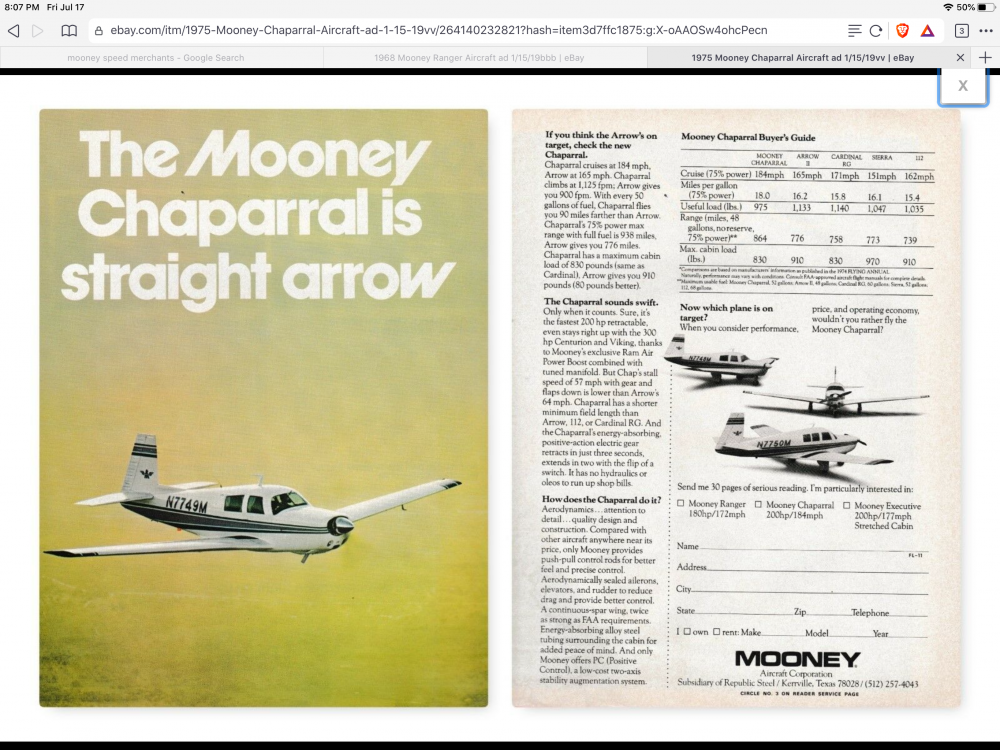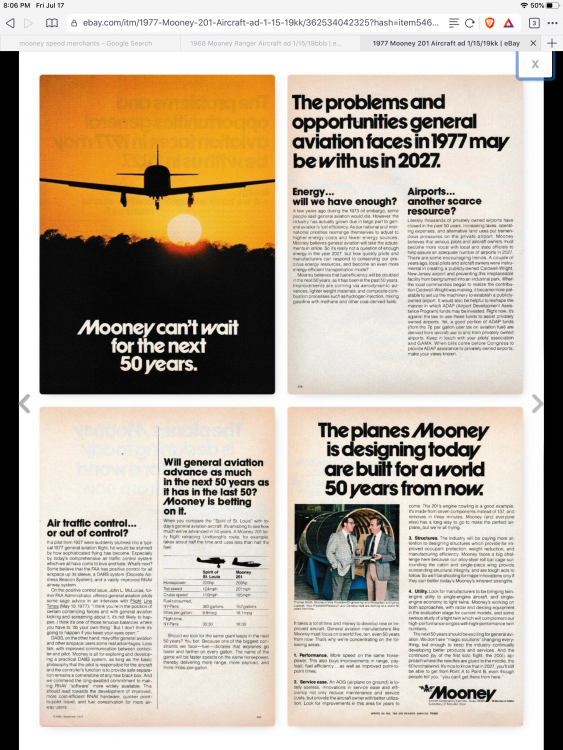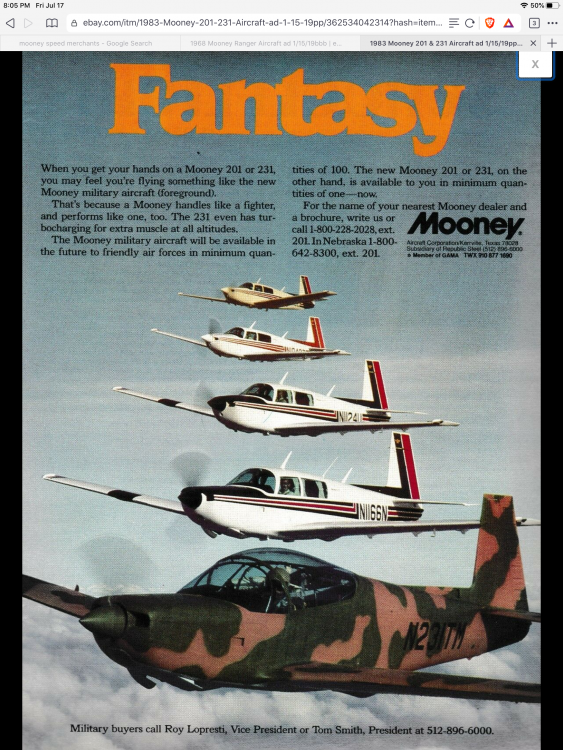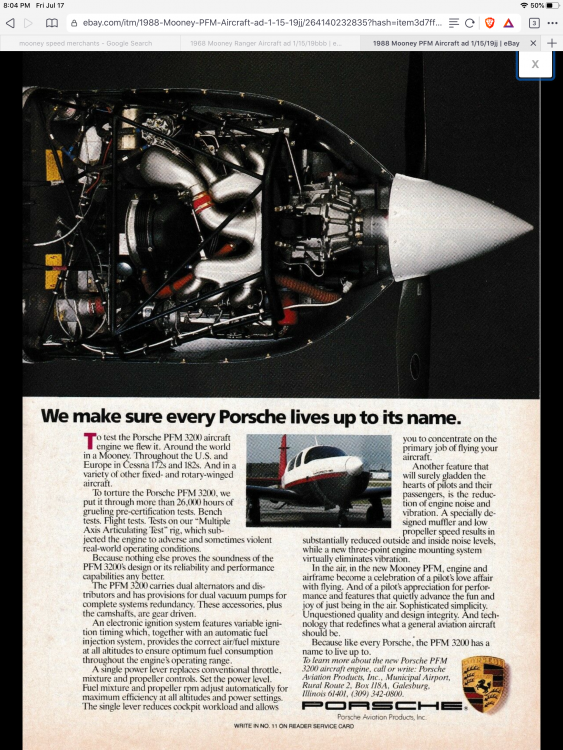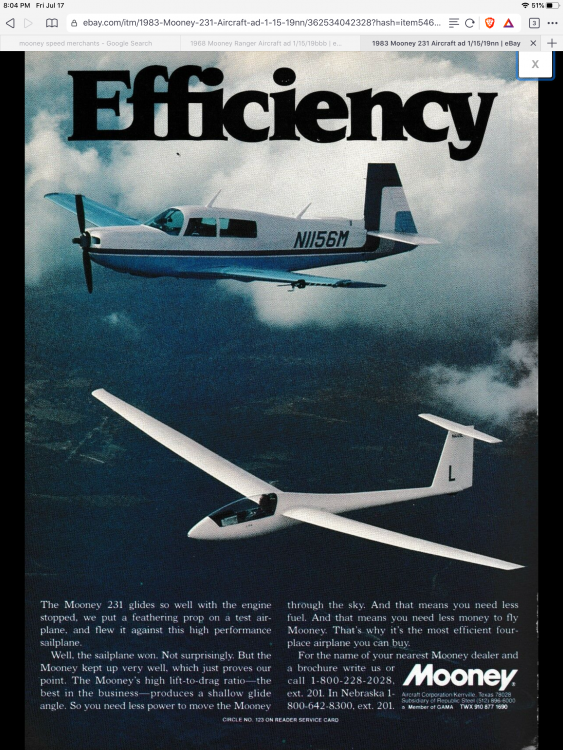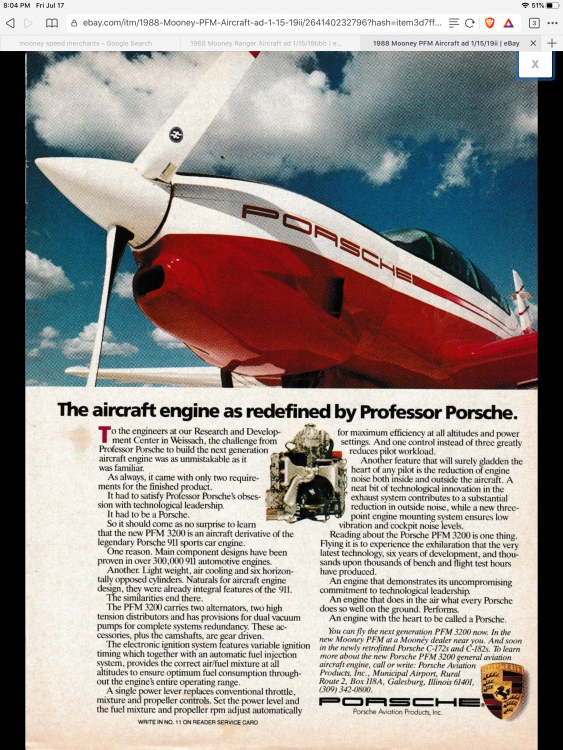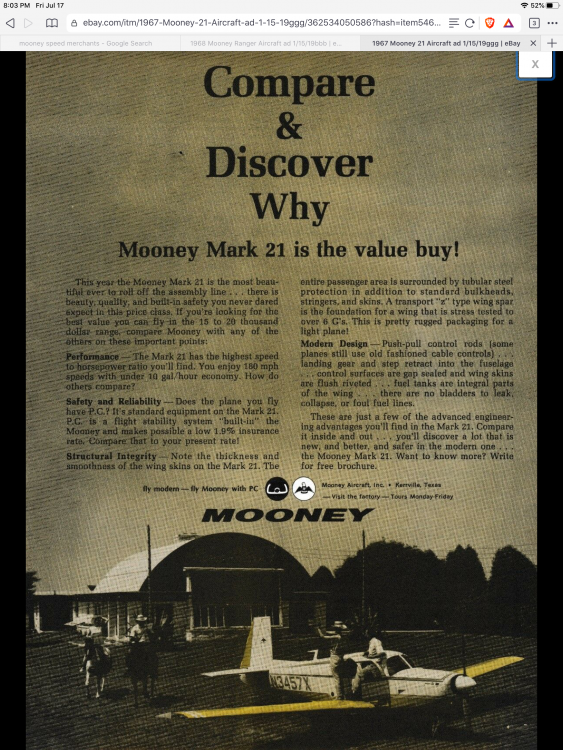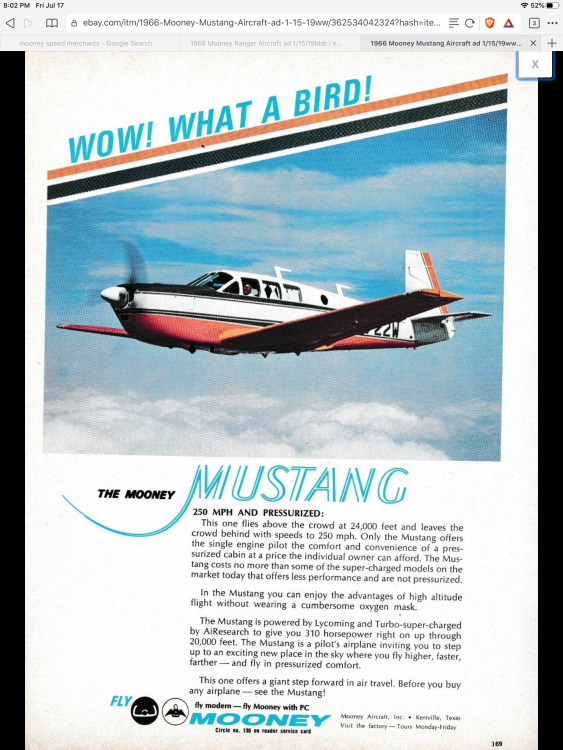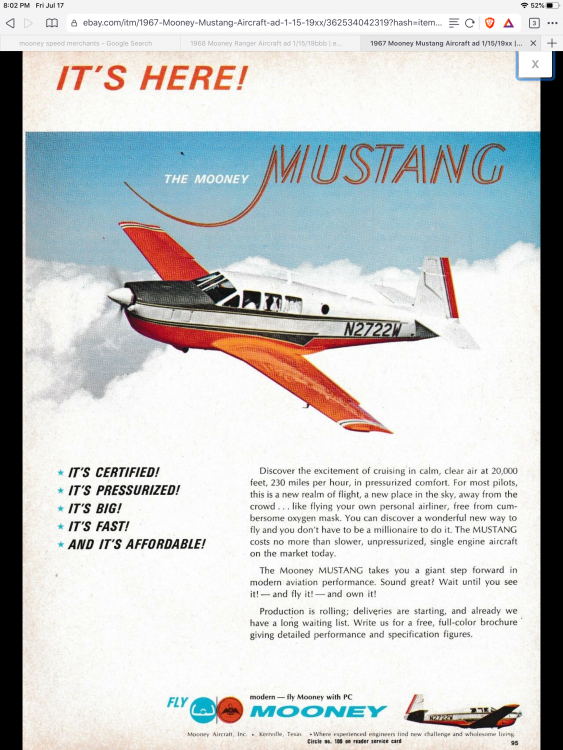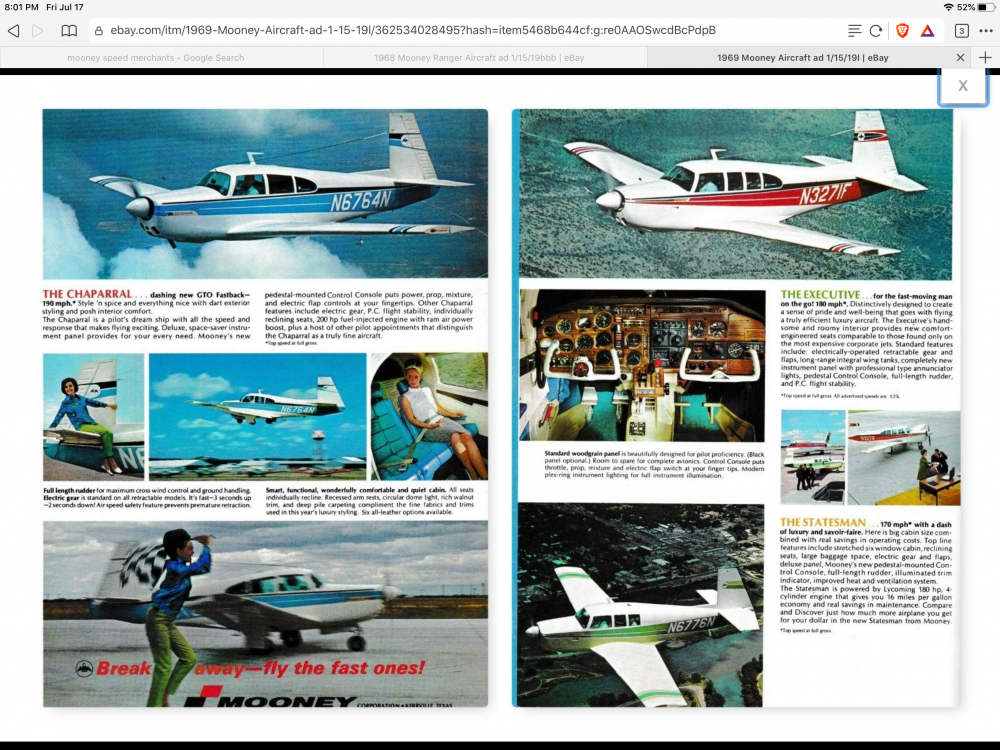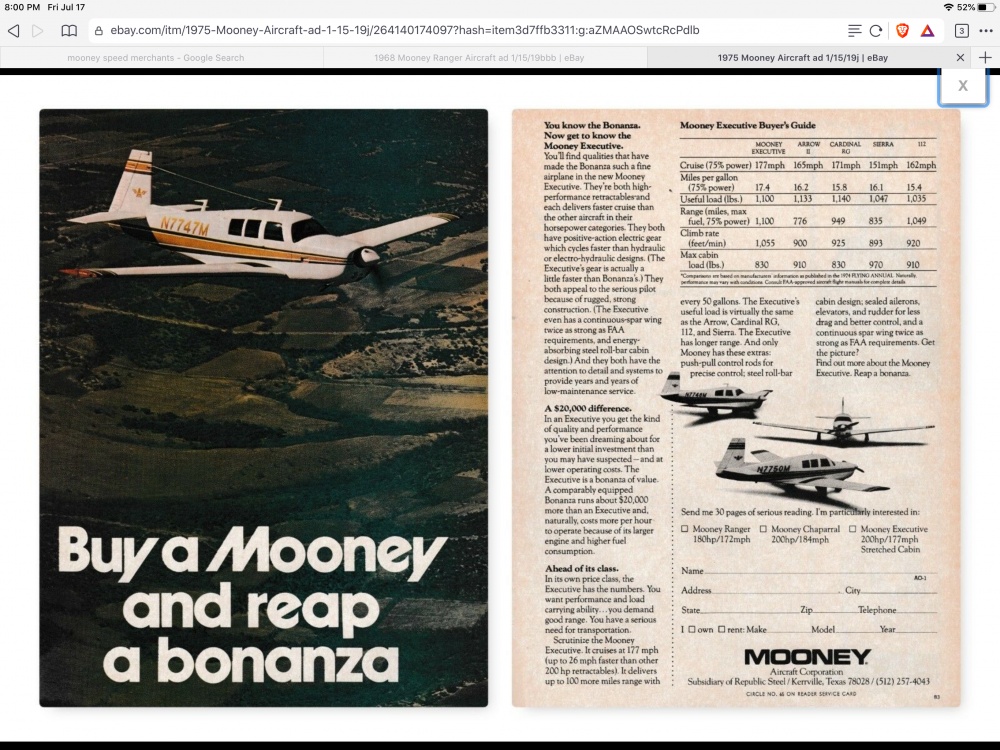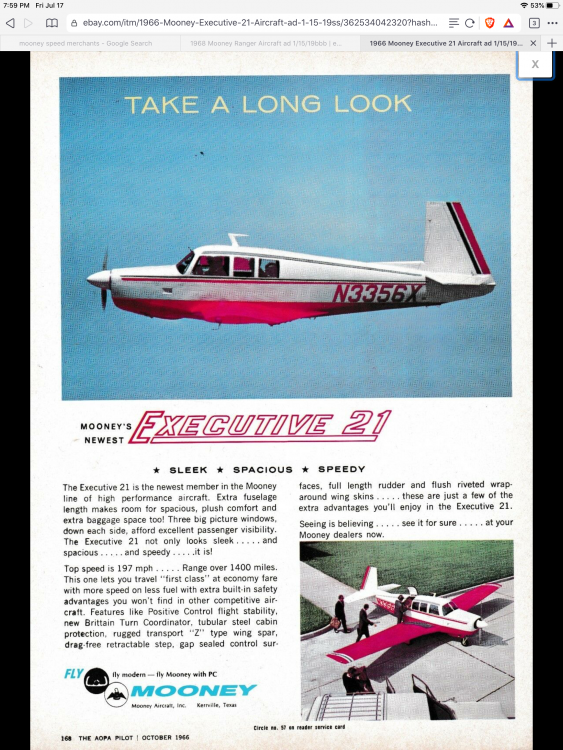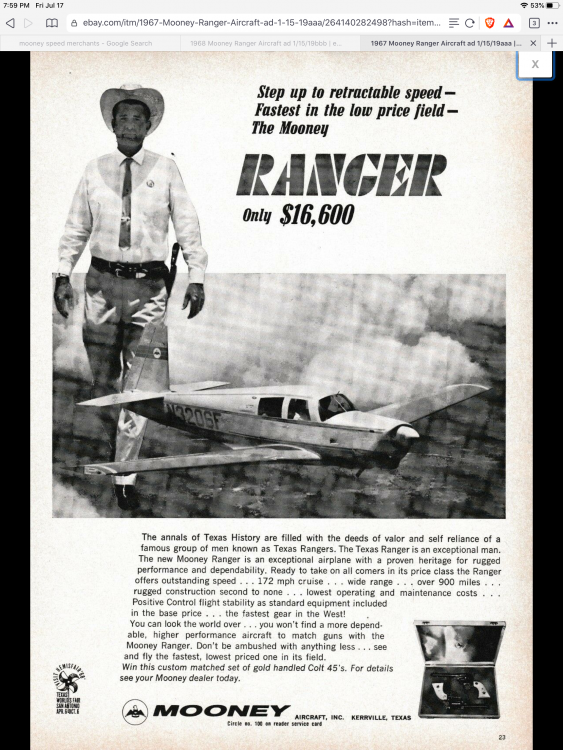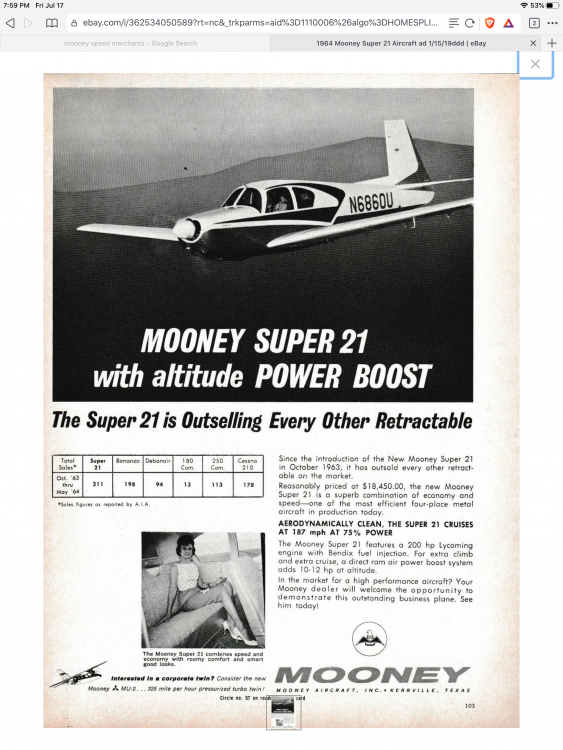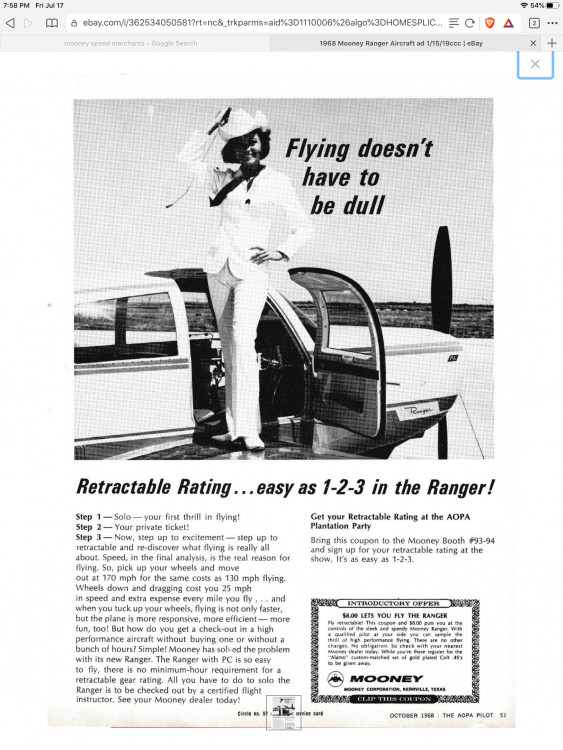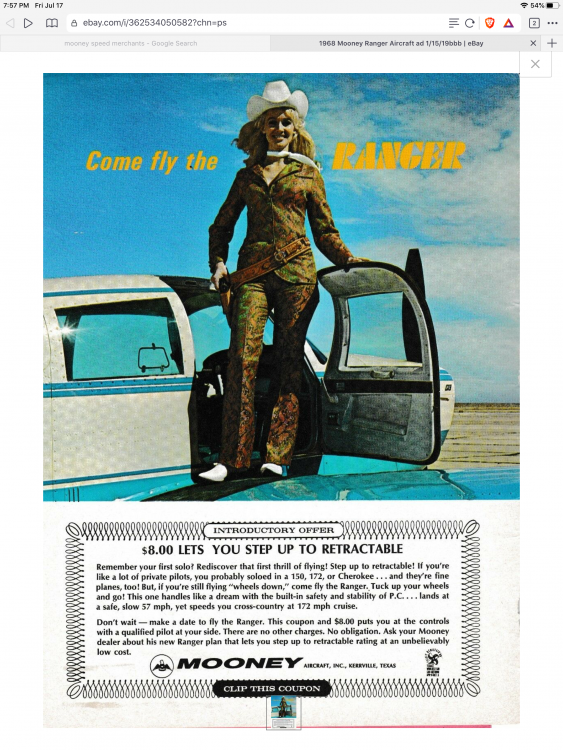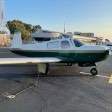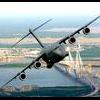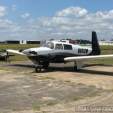Leaderboard
Popular Content
Showing content with the highest reputation on 03/03/2021 in all areas
-
3 points
-
By far my biggest vice is "it wont happen to me". I look back at myself with 250....500...750 hours and realized some of the stuff I used to do that was plain stupid and took me another 750 hours of experience to realize it. And I'm not talking about plainly stupid stuff like buzzing a house at 50AGL or loading 6 friends into a 4-seater- just regular day-to-day stuff that you don't realize. I've got a good story of how I don't blast off on a spontaneous night flight anymore and got a rude wake-up call, but that's something I'll only tell in-person over a cold one. Tomorrow I'm headed to Flight Safety in Wichita for 8 days on a simulator to learn the C208 and the amount of knowledge I've picked up over the past week of indoc alone is perplexing that little Private Pilot me didn't even know existed.3 points
-
The Bravo formerly known as N64HK is sporting a beautiful new paint job, shown here visiting KFXE.2 points
-
Well, I don't find the last statement to be true in my 231. First, yes, a turbo is an exhaust driven turbine, not quite accurate to say it is heat driven. What is it about the heat that drives the turbine, as opposed to the exhaust flow through the turbine. The exhaust flow is hot, of course, but if you blew an equal mass of cold air through at an equal velocity, the turbine would generate the same work. More importantly though, the degrees LOP vs. ROP is a difference in EGT, it is not a difference in CHT. The CHT's generally run quite a bit cooler at 25 LOP than at 50 ROP. It is the CHTs we are concerned with, not the EGTs. EGTs have value only as a relative number (when did that cylinder peak, and how many degrees from peak EGT is that cylinder now), CHTs have value to us as an absolute number. On the last statement, I am able to produce the same power in my engine whether ROP or LOP. When I cruise at LOP, I am at 71% or thereabouts. I have the ability, with a turbocharger, to vary my degrees LOP by increasing MP as well as by decreasing FF. So that is what I do to stay well LOP, I cruise at 34" MP and operate at 71% HP. I can operate at 71% HP on the ROP side also, if I want, but the CHT's will be quite a bit warmer, on the order of 80 degrees or more warmer. The reduction in CHT is not due to extra air being pushed through the cylinders when LOP, just as the reduction in temp when going further ROP than normal is not due to fuel flushing through the cylinder. What is happening in each case, for different reasons, is that the rate of combustion is being changed so that the combustion event is more of a push than an explosion, and less temp is generated. In the LOP case the fire takes longer to find the lesser available fuel, in the ROP case, the fire takes longer to find the lesser available O2. It is the varying of the fuel/air ratio that determines LOP or ROP. The amount of power being produced is the area under a curve, you can have the same area with a short, high peak, and with a lower and more drawn out curve. The lower drawn out curve will generate less heat because, among other things, the max ICP is lower. LOP is easier on an engine because the same power is produced with a less harsh power curve, than ROP. You could, in theory, make the ROP power curve about the same as the LOP curve, but to do it you would have to operate much more ROP than most pilots are willing to do.2 points
-
This is why my right hand is on the center bar above the glare shield on take off. It's very unlikely that my throttle/prop/mixture vernier controls will move by themselves, or quickly in any case. And there will be lots of indicators if they do start to move at all. But the seat letting go, would be an instant event.2 points
-
Reminiscent of Scott's post a while back "a nasty icing signature." The big difference is the big dry zone before we get to the inversion, suggesting that there isn't that much moisture to be trapped, and the temperature -30C. The saturation mixing ratio analysis doesn't seem applicable at 15k feet here. Interesting that you/Scott cut the CAPE from the numbers box. Looking at the chart the moist adiabat line would be to the right of the actual red temp line...i.e. instability...chance of convective clouds reaching 15k, hence icing possible? Robert PS: love these puzzles2 points
-
Now that your bird is fixed I guess they can reopen Oshkosh Airventure!2 points
-
@ basically $3k avg for just the kit, you’d have to sell 34 sets just to pay for the STC, can’t see that happening. Hoping Jose recovers - strokes are no joke... -Don2 points
-
Unless it is really in very bad shape, there are two routes: 1. Send it to Aerocomfort as Anthony @carusoam suggests. Hector will patch it and cover it and it will look very nice. However, doing that from France may be expensive and time consuming. 2. Repair it yourself. This isn't really all that difficult. It is made of ABS plastic. The glareshield is made of two parts. You can remove the underside by working it free with a putty knife and/or long bladed knife inserted between the two parts. Obtain some ABS sheet plastic and repair any damaged flat areas by gluing pieces of sheet plastic to the underside with ABS cement made for joining ABS plumbing pipe. Smaller defects or areas with compound curves or that need to flex can be repaired by cutting fiberglass cloth and covering the defect and coating it with ABS cement. Don't apply more cement than necessary to saturate the cloth to avoid softening the plastic too much. Use two or three layers of cloth. After it is structurally sound, turn it over and sand the top smooth. Patch any holes or low spots with plastic filler such as https://www.amazon.com/Permatex-84145-Permapoxy-Black-Plastic/dp/B00THUUVSU?source=ps-sl-shoppingads-lpcontext&psc=1 and sand it down. It may take a few applications. Once it is all smooth spray it with SEM texture coat (there are youtube videos for this) and afterwards sand it and spray it with SEM adhesion promoter followed immediately with SEM satin black color coat (again, there are youtube videos). Glue the two parts back together with silicone glue/sealer (which will hold the pieces together firmly but allow you to get it apart again if necessary in the future) clamping until cured. Skip2 points
-
39 CFIs so far on the list. Waiting on responses from a couple of folks on their model info and I’ll be cleaning up the list to post and send to @gsxrpilotfor the map.2 points
-
2 points
-
Holy smokes. I promise to get you updated! I am currently in Costa Rica and will probably clean up the list and be ready to post a good list here real soon for those looking for transition training and beyond. thank y’all so much for all the support and now I hope to see those folks buying new to them Mooney’s with a good resource to find an instructor to help.2 points
-
Spar Splice is in front of the rear seat, middle of the floor. Just where folks spill drinks in the back ;o)2 points
-
2 points
-
2 points
-
1 point
-
1 point
-
1 point
-
PDC is not CPDLC CPDLC is great for oceanic flights where the alternative is HF going through airinc. I dont think its necessary for GA flights where you are in VHF comms.1 point
-
Wingologist may still be able to work with the STC owner and still install the LR tanks. At least that’s how he made it sounds 3 weeks ago on the phone. https://wetwingologistseast.com/1 point
-
Hi Art, I would like to clarify a few things. Dynon takes pride in being the "Opposite of Garmin". We believe that doing so separates us in the marketplace. We offer real customer service. We don't charge for database and software updates, which usually includes new functionality. We also do not require customers to have the installations performed by a dealer. The part 23 airplane owner can purchase directly from Dynon, and any individual with the correct credentials may accomplish the installation. This gives the owner the freedom to shop installers for best service and /or price. It doesn't matter to Dynon if your installer works for a major FBO with glossy letterhead, or works out of the trunk of their car. In addition, feedback from our installers (and yes, we have a list of preferred Dynon Authorized Installation Centers (DIAC) who have proven their experience with our products) who also are Garmin dealers, who report that the Dynon installations take less time, because of the simplicity and plug and play nature of the equipment. And finally, costs. It is true, that for minimum equipment required by the STCs Garmin's G3X has an advantage over Dynon's certified product, the SkyView HDX. But few customers only purchase the minimum equipment. When one begins increasing the list of options desired, one quickly notices that the Garmin prices really begin to ramp up. When one compares the same list of desired functionality with what SkyView HDX provides, you will find that Dynon can provide the functionality for less money. So as you can see, trying to compare Dynon to Garmin is a bit like comparing oranges to apples. Dynon offers an alternative to Garmin's methods which is attractive to many. Dynon also offers lower cost options for installation and to purchase- if you desire more than the minimum. The best way to determine if Dynon Skyview HDX, and the FlyDynon way is right for you, is to have a discussion with our sales team. We even offer a free service that allows you to schedule a one on one zoom meeting session with our sales staff using a real simulator that allows every SkyView HDX feature and function to be demonstrated to your satisfaction, in an environment that feeds it real (simulated) information using off the shelf flight simulators. If you would like to learn more about the FlyDynon way, simply call +1 (425) 402-0433.1 point
-
The sound at idle is different. It's different somewhat quieter tone. I'll include There is a distinct sound difference at idle. Both Erik and I noticed that. It's softer but also simply a lower tone - maybe the "scooping" or flexing in of the prop. It is smoother though I used to dynamically balance my prop so it was smooth anyway (but this is smoother) and the pitch changes are faster than a metal prop because it's lighter. I'll write more in the further write ups to come. Yes! I hope to see many of you at Mooney Summit in our "new normal" that should be here by October. -Seth1 point
-
Take away’s for me since it’s all speculation, let’s mitigate those potential causes in our community. 1. When seat is positioned where you want it—-gently -rock forward then back to FEEL you are hooked. I do this religiously because I had seat slip back when pushed rudder to turn while taxiing. Happy it happened on taxi. 2. Run-up— Exercise the Trim stop to stop. Admittedly I slack here. But not so moving forward. 3. A MS’er /A&P/AI posts pics and guidance on that AD from 2012. Hope all have complied, but again?1 point
-
Story of why my airplane is named Hank: I purchased it using a broker from Hank Williams III. Son of Hank Williams Jr. Son of Hank Williams. This is why our Hank feels the airplane is named after him! The first time my wife, then girlfriend at the time took a flight with me in "Hank" she said "Hank wanna fly" during the takeoff roll. She said she could feel the power increase compared to my former 1967 M20F. Here's some information on Hank Williams III https://en.wikipedia.org/wiki/Hank_Williams_III Also, the airplane is know as "Lady Luck V." My paternal grandfather who I never met passed away in 1071 at 50 years old. He flew B-17's with the 401st in Europe during WWII. He completed 43 combat missions. His first B-17 was the "Lady Luck" which he ditched in the english channel. "Lady Luck II" was shot down over france - he bailed out. "Lady Luck III" he finished the war in. My former 1967 Mooney M20F was "Lady Luck IV" and Missile is "Hank" and also "Lady Luck V" -Seth1 point
-
What can I say Erik? I just wanted to match your prop! For all, Erik was a huge resource during the last 18 months on this - really since before it happened. I do plan to list out everyone who assisted as part of a future write up in this thread. -Seth1 point
-
Seth, sorry to hear about your trouble, but glad you are on the other side. I'll echo the comments, it looks great.1 point
-
1 point
-
Tom, That’s the point of my paragraph... The FAA has set hard lines... JPI clearly followed exactly what the FAA said to do... Back in the day, our needles wobbled and everyone accepted the fact that needles wobble... Nobody bothered to discuss that our mechanical controls over things like MP and RPM are not exact during changes... they can overshoot, undershoot, and can be decreasing sinusoids... Today we have an instrument that is sensitive enough to detect and alarm when the needle wobbles 0.1 rpm over the redline... and only stays there for a micro second... That isn’t protecting us or our equipment for any real reason... Tuning down our engines so the JPI doesn’t alarm wouldn’t be a proper response either... See the video where the Mooney plows into a berm because the engine wasn’t producing full power... Sure... set the alarms in accordance with the actual redline... set the engine to control at the redline... It is the other variable... being discussed... the small momentary overspeed or over pressures that come with gross power changes... they exist, we just didn’t look so close... PP thoughts only, not a mechanic... Best regards, -a-1 point
-
1 point
-
1 point
-
Actually, you do want some force on the trim system. It will take up the backlash, otherwise the tail would be constantly banging back and forth on the backlash of the jack screw. I’ve flown Mooneys where you could move the tail up and down on the ground as much as 1/4 inch, in flight it was perfectly stable. Besides, if you couldn’t back drive the ring and pinion in the trim gearbox, how does an electric trim motor do it?1 point
-
I thought the lines need to cross to have clouds? The sky should be clear, unless I have my lines backward and it is solid clouds the whole way up...1 point
-
I did look at gyroplane. Most seem to have a 170lb weight limit. Don’t thjnk any amount of eating wheat grass would get me there.1 point
-
1 point
-
Here's what my A&P friends tell me: Mooney's are not the easiest plane to work on and sometimes work takes a little longer than on a Cessna or Piper especially if you have to get behind the instrument panel on a later model. And, Mooney owners have a reputation for ...how do I say this politely ... being, er, frugal. So, unless the owner specifies that they want all the stuff removed, a lot of shops won't to avoid arguing over the cost of the labor when the owner gets the bill. I think the reasonable thing to do is discuss the options with the owner. In my case I had the ADF removed in three stages: The panel mount unit was removed during installation of other avionics. The antenna was removed and the hole plugged and painted during other work at a different shop. I removed the wiring between the panel and antenna when I refurbished the interior and had it inspected and the W&B updated. So three operations to get it all removed and three W&B updates, but it was the most efficient way to do it. Skip1 point
-
Getting a rating to fly a powered lift Osprey... may take signing up for a few years... All things are possible... especially, if you were born into the right family... There were a couple of Harrier Jets in private hands... The insurance bill must be interesting for that... -a-1 point
-
The big 6 cylinder engines don't seem to add as many knots as they do GPH I disagree......... my former Ovation, 280HP, IO550G, above 8,000 ft, 20-30LOP, 12.5 gph 174 kts. All approximate as things do vary a bit with contributing factors. Regardless, it’s a lot of speed for the buck. The best cumulative speed mods for Mooney is the Acclaim!1 point
-
The 150 is worse. I never practiced full flap stalls with students jn the 150 because if they couldn’t retract we couldn’t get back home. Cessna later removed the 40 degrees of flaps1 point
-
I found out this guy is a pilot, so this is aviation related............ Listen women.mp41 point
-
https://rgl.faa.gov/Regulatory_and_Guidance_Library/rgAD.nsf/0/6b6b68153b98376a8625765c005290eb/$FILE/2009-22-03.pdf Clarification Needed in Engine/Model Listing One commenter states that the applicable model list of aircraft and engines seems to indicate that all of the aircraft/engines mentioned are 180 horsepower, yet the propeller applicable model list covers propellers installed on counterweighted angle valve engines which are 200 horsepower. Specific inclusion or exclusion of counterweighted engines and valve configuration (whichever is the case) needs to be incorporated for clarification; or the aircraft/engine model list needs to be finite instead of, ''not limited to.'' We agree that clarification is needed to define the engine models and airplane models that are affected by this AD. We changed the AD to clarify the callouts for the engine and airplane model listing If you look at the engine and aircraft listing the IO360 A1A is not listed, The M2oF is also not listed the M20E is listed incorrectly as a Master 21 in one place and as having a 180 HP engine in another The only 200 HP engines listed are the Seneca 1 , No other aircraft with the 200 are on the list per the paragraph above. the B,C and G models are correctly listed with their 180 HP engines. I'm just wondering why E and F model owners are dishing out money every 100 hours when the AD apparently dosen't apply to their aircraft?1 point
-
For Mooney Instruction: Mark Nicholson, CFI NICHMARK@hotmail.com 619.318.1507 San Diego, CA1 point
-
In regards to climb, someone on here did analysis and came up with the "Vz" climb as most efficient. Basically it's max power and up to cruise altitude as quickly as possible while maintaining 120kias in the climb. Don't power back in the climb. More time climbing has an adverse affect on efficiency. However, too high an airspeed add parasitic drag as well. So essentially you still maintain Carson's speed in the climb and you use excess power to climb quickly. I did some of my own experimentation to find the same to hold true for the descent stage of a trip as well. Most Mooney guys are in too much of a hurry to get to the shitter that they go full speed on the descent. What they aren't realizing is that the high speed in the descent does burn away as parasitic drag as well and cancel out some of the efficiency they sought in cruise. So, 120kias all flight long, 8gph cruise, and LOP are the way to fly a Mooney fast and as efficient as you can get while going fast.1 point
-
lights on order, supported one of our supporters on Mooney space, 2 landing lights and 2 taxi lights, since there are 2 lights in each wing, down loaded how to do article, thanks for MSC support and don't have to spend 750 on rewire. and use half the power. SEX DOES SELL1 point
-
What is a CFI-A and CFI-G. Serious question. I've never seen this before. Thanks,1 point
-
It wasn’t me. I started to install my LEDs but discovered my hands were too big and clumsy to work through the opening so I let an MSC do it1 point
-
1 point
-
Quick PIREP. Love this thing! I got mine installed yesterday at an MSC in PA, and it took them about 5 hours to do everything, including testing and setup. We did use the panel behind the wheel faring on the pilot side as recommended, and after removing the pilot seat and one side panel, the wiring was relatively easy (at least it looked that way). They did install a fuse so I didn't have the danger of a shorted circuit right behind a fuel tank. I had two landings afterwards, one in KTEB and another in KHGR, both at night. The system announced all altitudes from 70 down, including the "check gear" warning, and the sound was clear and loud from the ADF input on a Garmin 340. Both landings were made easier and touch downs more predictable. You hear the cadence of the altitude callouts and adjust your rate of descent accordingly. Of course you can land without it, but after a long day of flying and landing at night with strong winds, this was a welcome aid.1 point
-
Here are a couple vids that show some basic fastener performance under transverse vibration. Not every fastener experiences transverse vibration, but it's often considered the worst case as it apparently is the most likely type of vibration to undo a fastener. This one compares split washers and star-toothed lock wshers and shows they're basically the same in these conditions.1 point




